Setting the Standard, Ensuring Justice
Syracuse University’s Forensic and National Security Sciences Institute hosted the nation’s first hands-on Next-Generation Sequencing training for state crime labs.
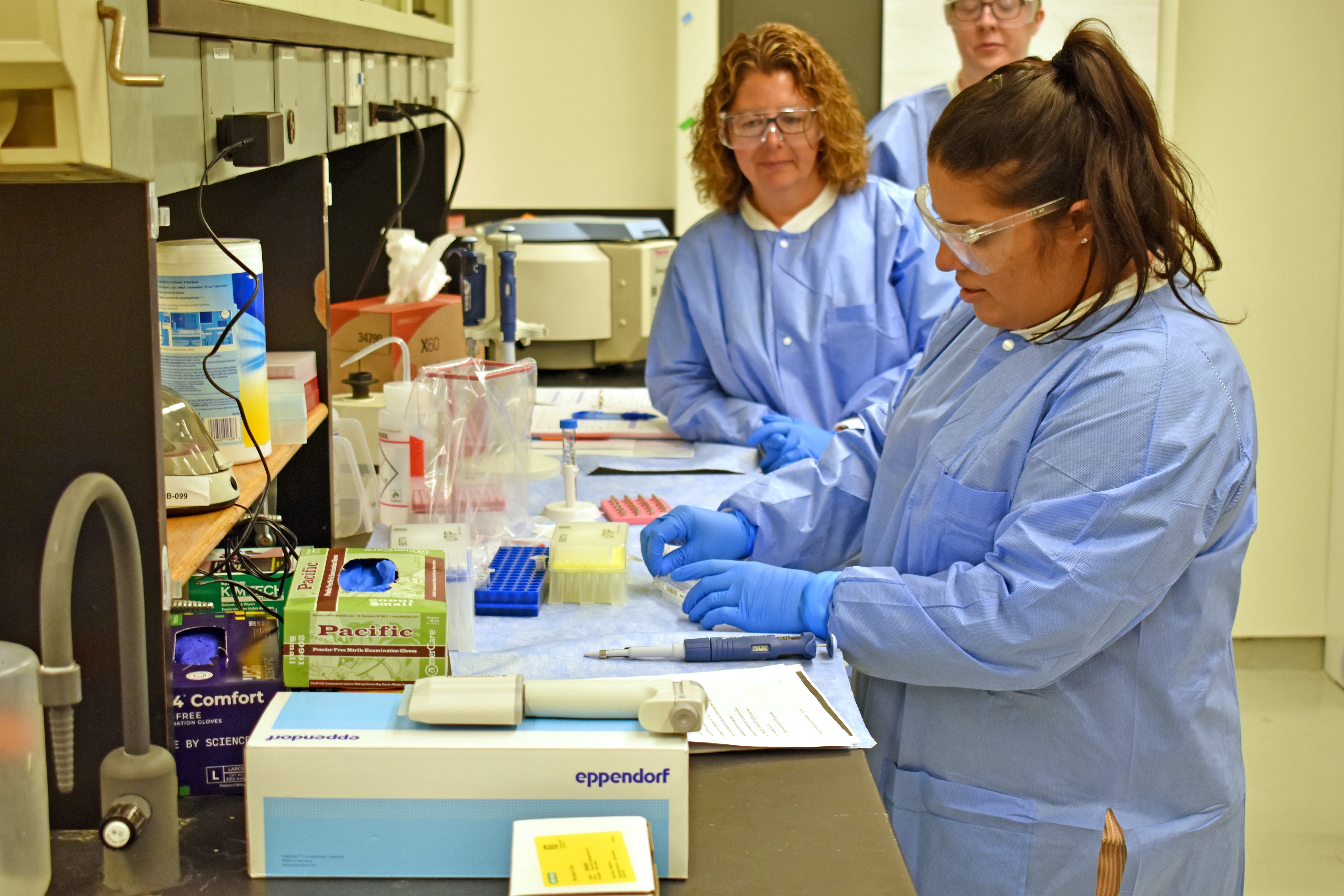
Everyone knows DNA plays a crucial role in solving crimes—but what happens when the evidence is of low quantity, degraded, or comes from multiple individuals? One of the major challenges for forensic laboratories is interpreting this type of DNA data from crime scenes and comparing it to known profiles or databases. Traditional methods, although tried and true, can be improved, which is why DNA sequencing is now being considered by forensic laboratories across the country.
Last year marked the first time that evidence from Next-Generation Sequencing (NGS) was used in court to help clarify the circumstances of a crime in Kern County, California. Using NGS, the Kern Regional Crime Lab was able to analyze over 150 genetic markers from a single evidence sample—compared to just approximately 24 with previous methods—helping to establish the key details in a murder investigation.
Never before had NGS, a form of DNA testing that allows researchers to obtain higher-resolution data by analyzing more genetic markers, even from low-quantity or degraded samples, been used in a criminal case in the United States. Because the legal system is slow to adopt new technologies until accepted in court, this landmark proceeding opened the door for the broader application of this innovative technology, which now promises to transform the future of forensic science. The College of Arts and Sciences’ Forensic and National Security Sciences Institute (Forensics Institute) is leading the effort to bring this advancement to New York State, recently hosting the nation’s first sequencing training for forensics professionals from public crime labs across the state.
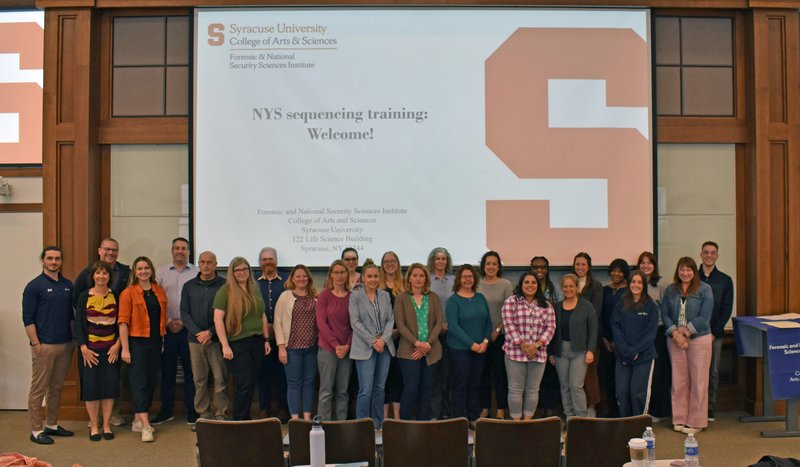
The New York State forensics community gathered on the Syracuse University campus recently to take part in the first-ever Next-Generation Sequencing training.
The weeklong session brought some of the world’s leading experts in forensic DNA sequencing to campus, including representatives from Qiagen, a manufacturer of DNA extraction kits and sequencers; Opentrons, a New York-based robotics company; NicheVision, a developer of DNA analysis software; and Nimagen, a DNA sequencing kit manufacturer. These experts worked alongside faculty from the Forensics Institute, as well as instructors from the New York City Office of Chief Medical Examiner’s Department of Forensic Biology and the New York State Police, to lead the sessions. The training was sponsored by the New York State Department of Criminal Justice Services Office of Forensic Services.
A Training Ground for Students
In addition to showcasing the innovative, standard-setting work being done by the Forensics Institute, this training—which included participation from several students—highlights the University’s commitment to preparing graduates with advanced, cutting-edge forensic research skills that translate directly to real-world applications. While NGS will be a vital tool for students wanting to work in crime labs, it also plays a crucial role in non-criminal contexts such as missing persons identification, disaster victim recovery and ancestry/genealogy research.
Prior to the session, undergraduate and graduate students conducted practice runs with the technology under the supervision of project Principal Investigator Michael Marciano, professor of practice and director of forensic research at the Forensics Institute, and Natalie Novotna, professor of practice, who helped organize the training.
“They also assisted in the lab during the actual sessions and sat in during the lectures,” says Marciano. “It was a great opportunity for them to also get exposure to the professionals who attended because they may one day be their employers.”
As a leader and early adopter of the use of NGS technology in forensics, Marciano—along with Novotna, Professors Jamie Crill and Kathleen Corrado from the Forensics Institute, and other collaborators—developed a curriculum for lab personnel in New York State that mirrors many of the exercises students complete in the classroom and research settings.
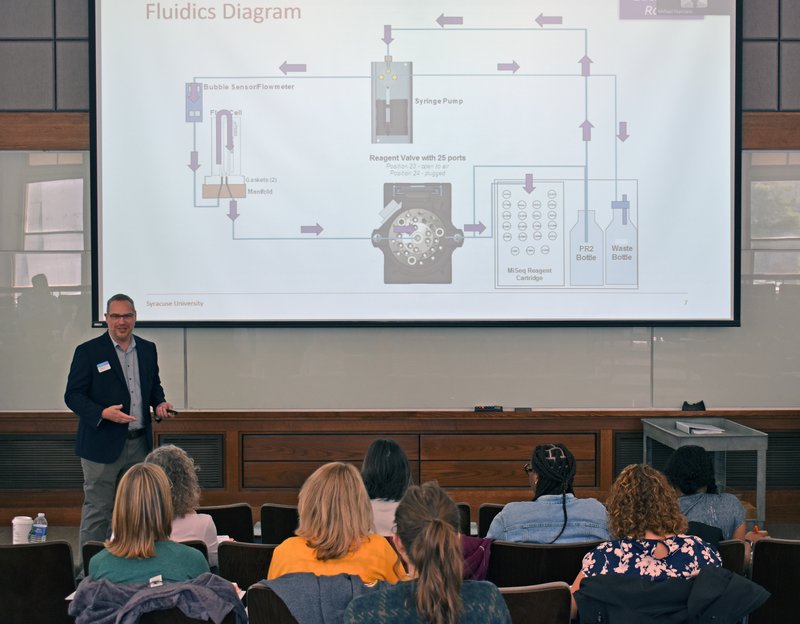
Forensics professor Jamie Crill providing “under the hood” information on how the DNA sequencing system operates.
“There had never been a fully immersive DNA sequencing experience in forensic science, which is what we were going for,” says Marciano. “What we are able to provide is practical hands-on training, and the reason we can offer this is because SU is one of the few programs in the country with the expertise and specialized equipment to support it.”
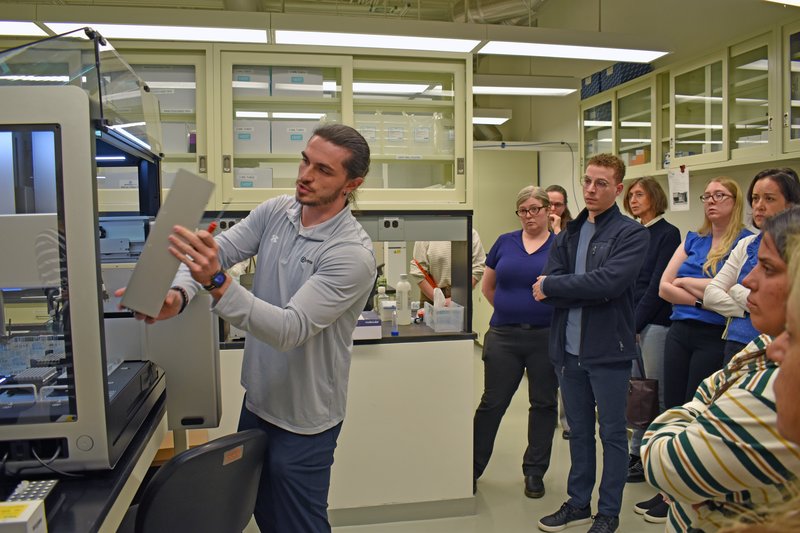
Zach Galluzzo, a field application scientist with Opentrons, provides a demonstration of an NGS workstation, which automates the preparation of DNA sequencing samples.
Consistency and Collaboration
Forensic lab systems differ by state. In Virginia, for example, the state government operates forensic labs. In contrast, New York uses a jurisdiction-based model, with county and city labs handling cases locally, while the state police cover investigations not served by those labs. According to Forensics Institute Director Kathleen Corrado, in states without centralized, state-run forensic labs, individual labs often adopt new technologies independently. One lab might validate and implement a new method in its own way, and then, a year or two later, another lab might adopt the same technology but follow a different process.
“We're hoping that this training brings more consistency to the implementation and execution of NGS by crime labs throughout the state,” says Corrado. “That way, labs can collaborate, help each other troubleshoot, and keep things consistent when it comes to quality control and reporting — which in the end will benefit the judicial system as whole.”
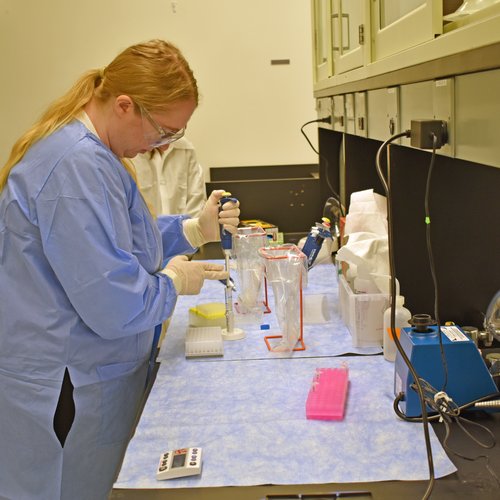
Caitlin Hoey from the Suffolk County Crime Lab performing bead washing steps for manual sequencing library preparation.
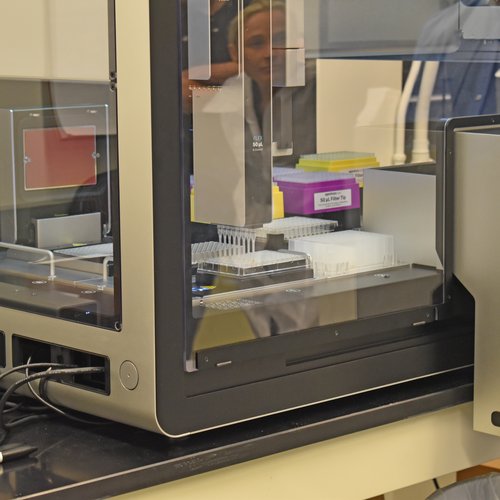
Opentron’s NGS workstation, which automates workflow to increase efficiency, reduce errors and save time in the lab.
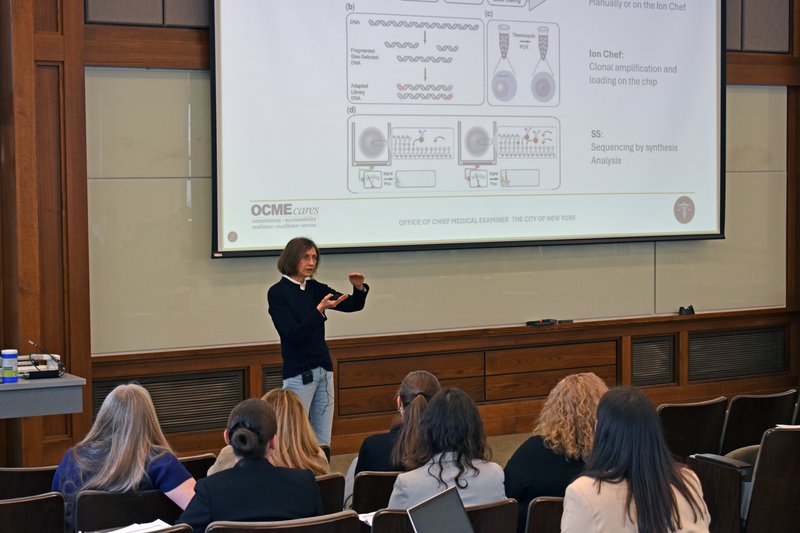
Elisa Wurmbach, from the NYC Office of the Chief Medical Examiner Department of Forensic Biology, discussing her research on NGS.
By the end of this session and another planned for next May, representatives from crime labs—including those in Niagara, Erie, Monroe, Onondaga, Westchester, Nassau and Suffolk Counties, as well as the New York State Police and the New York City Office of the Chief Medical Examiner—will have received training at Syracuse.
“This initiative truly exemplifies the mission of the Forensics Institute—to foster collaboration among government agencies, private industry, and academia in advancing forensic science and national security,” says Corrado. “These invaluable partnerships offer our students meaningful opportunities to engage with and learn from leading professionals—giving them a distinct advantage when pursuing careers with the very organizations we work alongside.”
Marciano adds, “This will be the first among many training opportunities that Syracuse University’s Forensics Institute is able to offer, benefiting the crime labs and criminal justice system within New York State and fostering student engagement and practical experience.”
Featured
Michael Marciano Professor of Practice and Director for Forensics Research
Kathleen Corrado Forensics Executive Director
